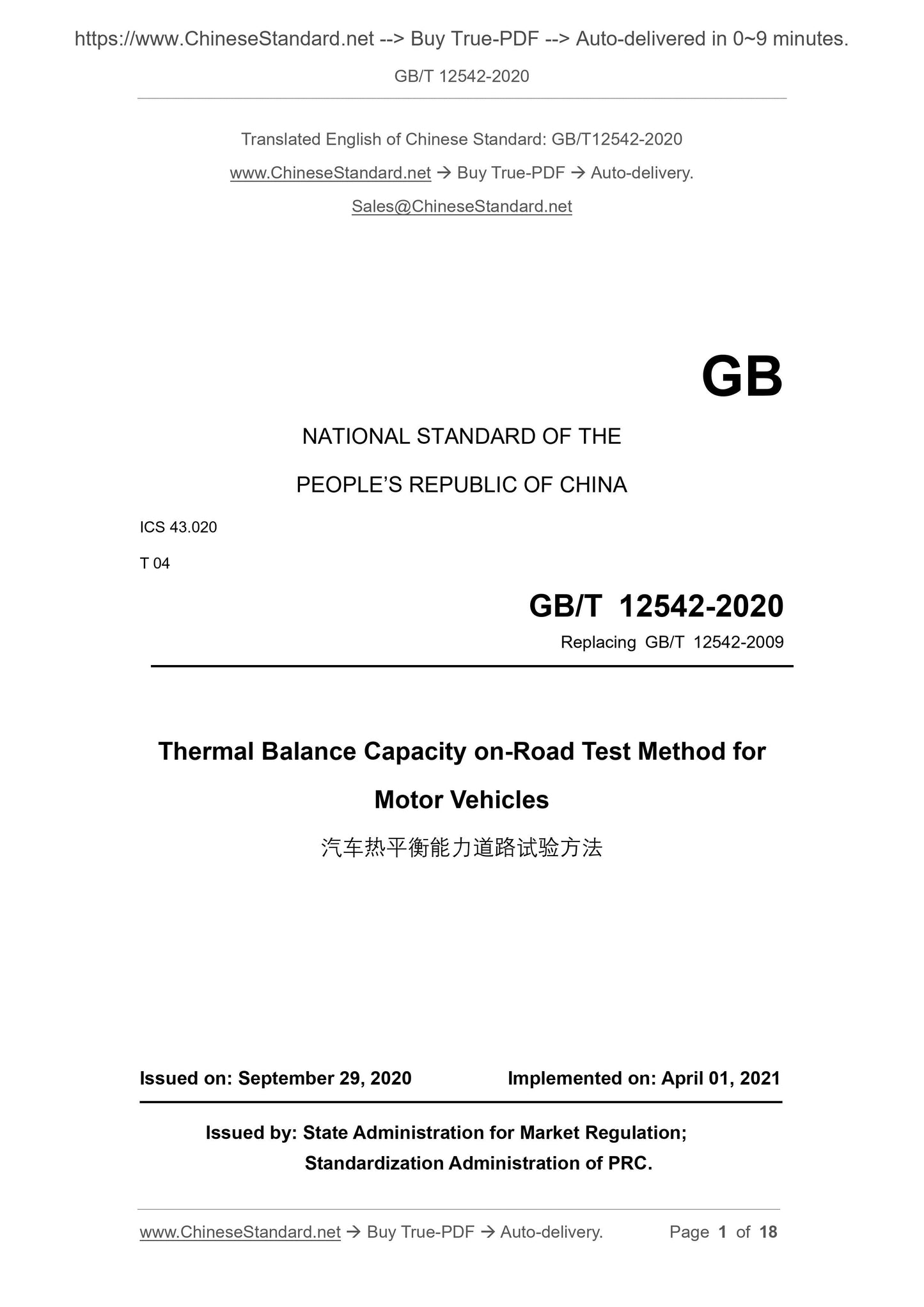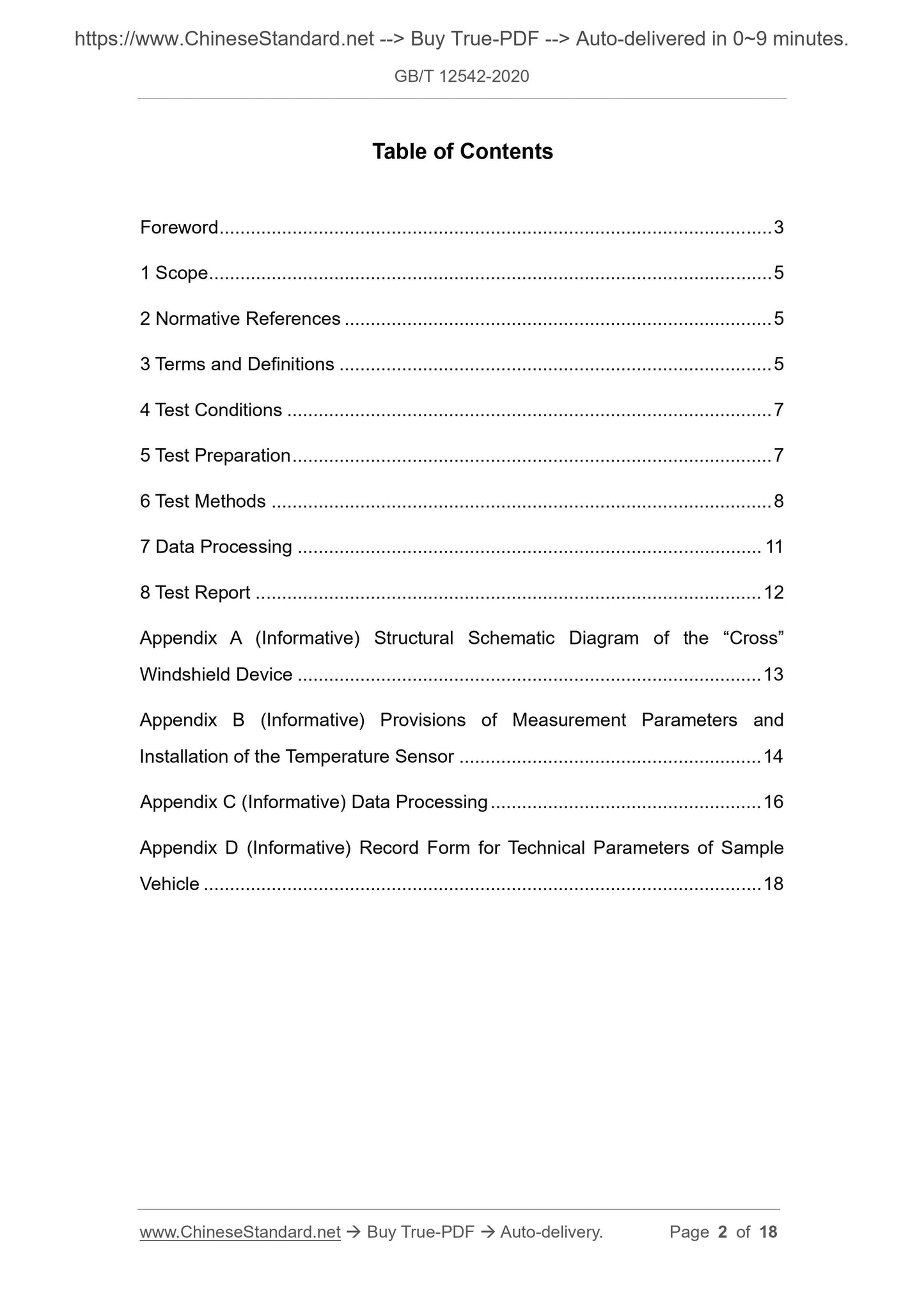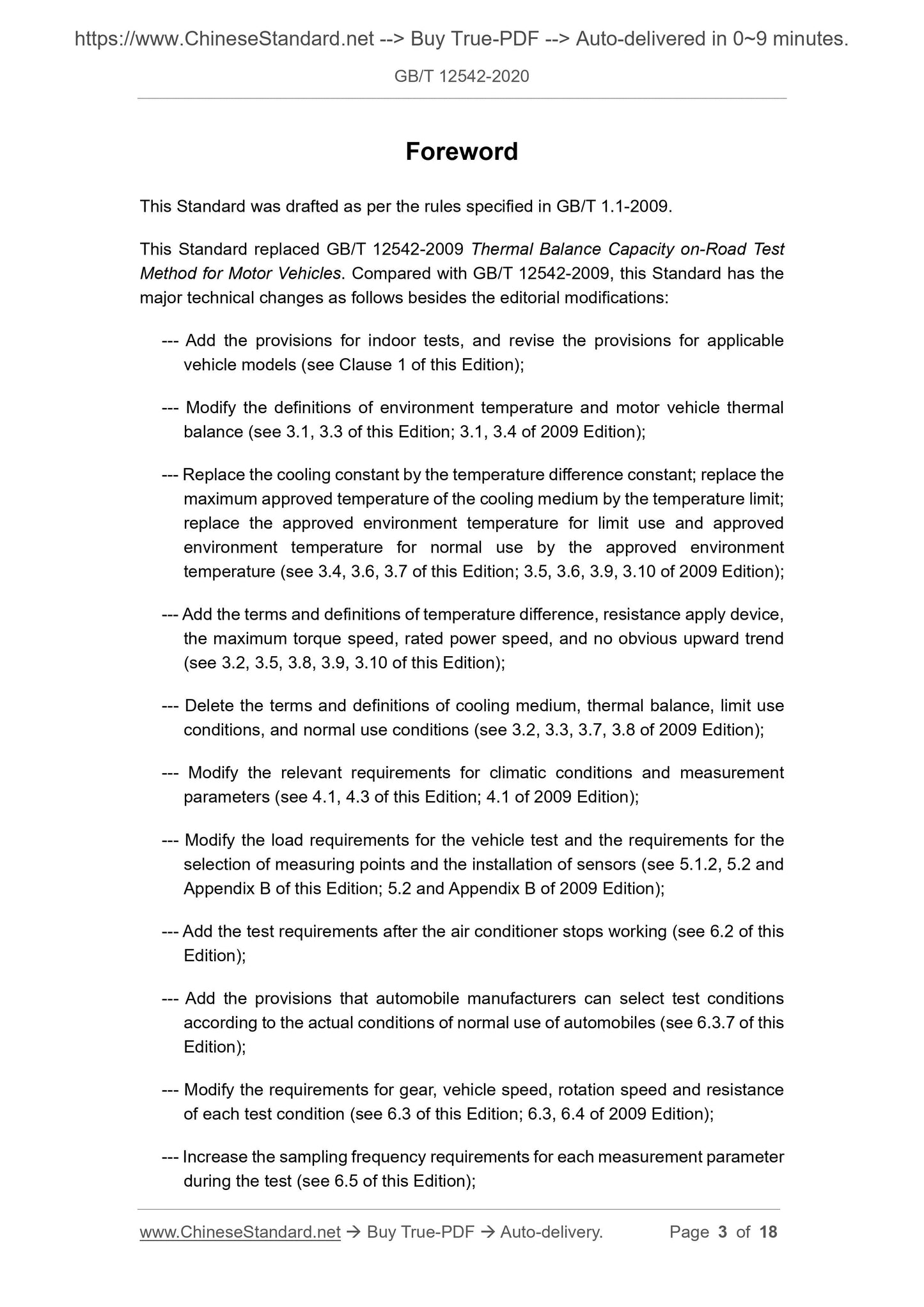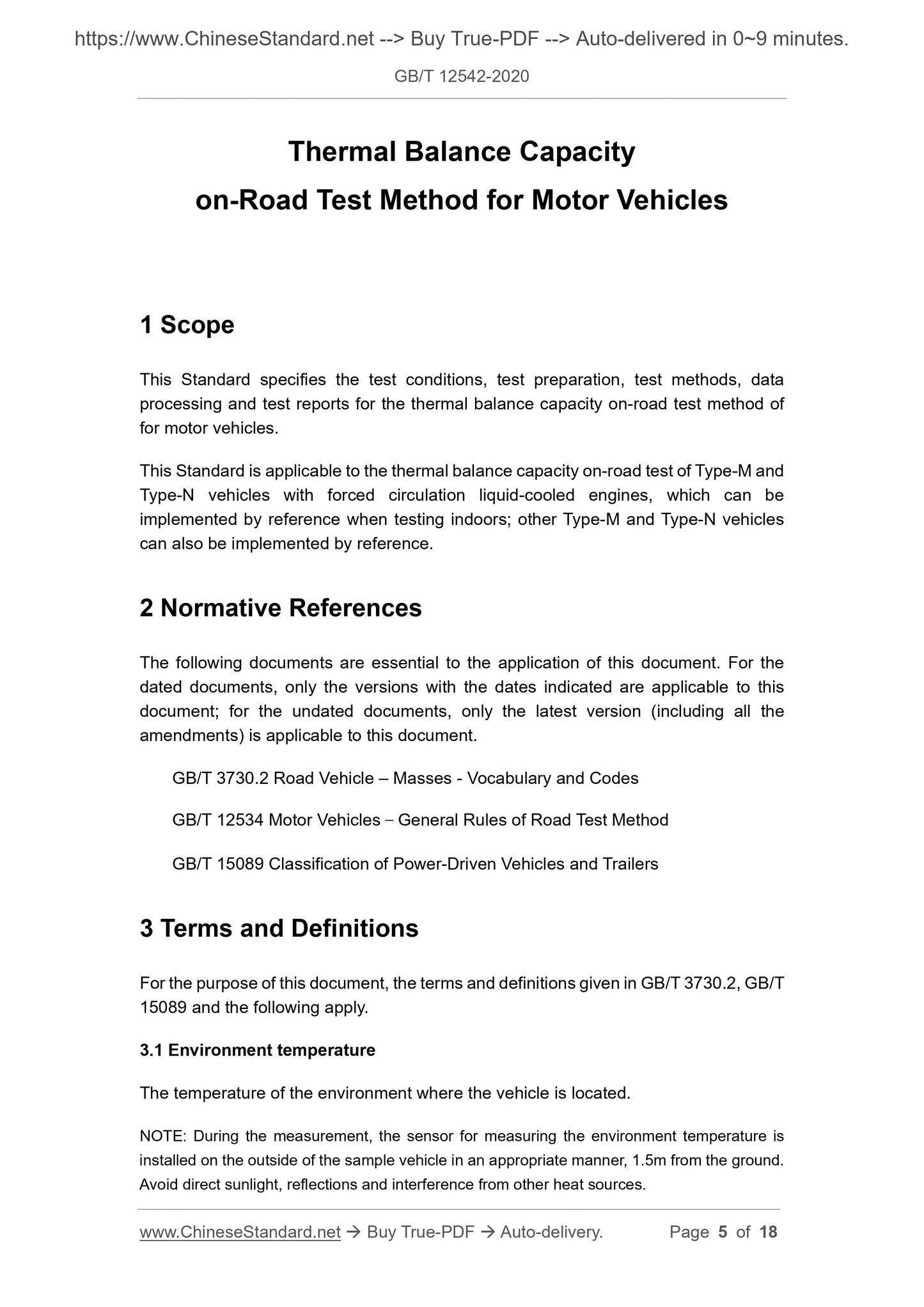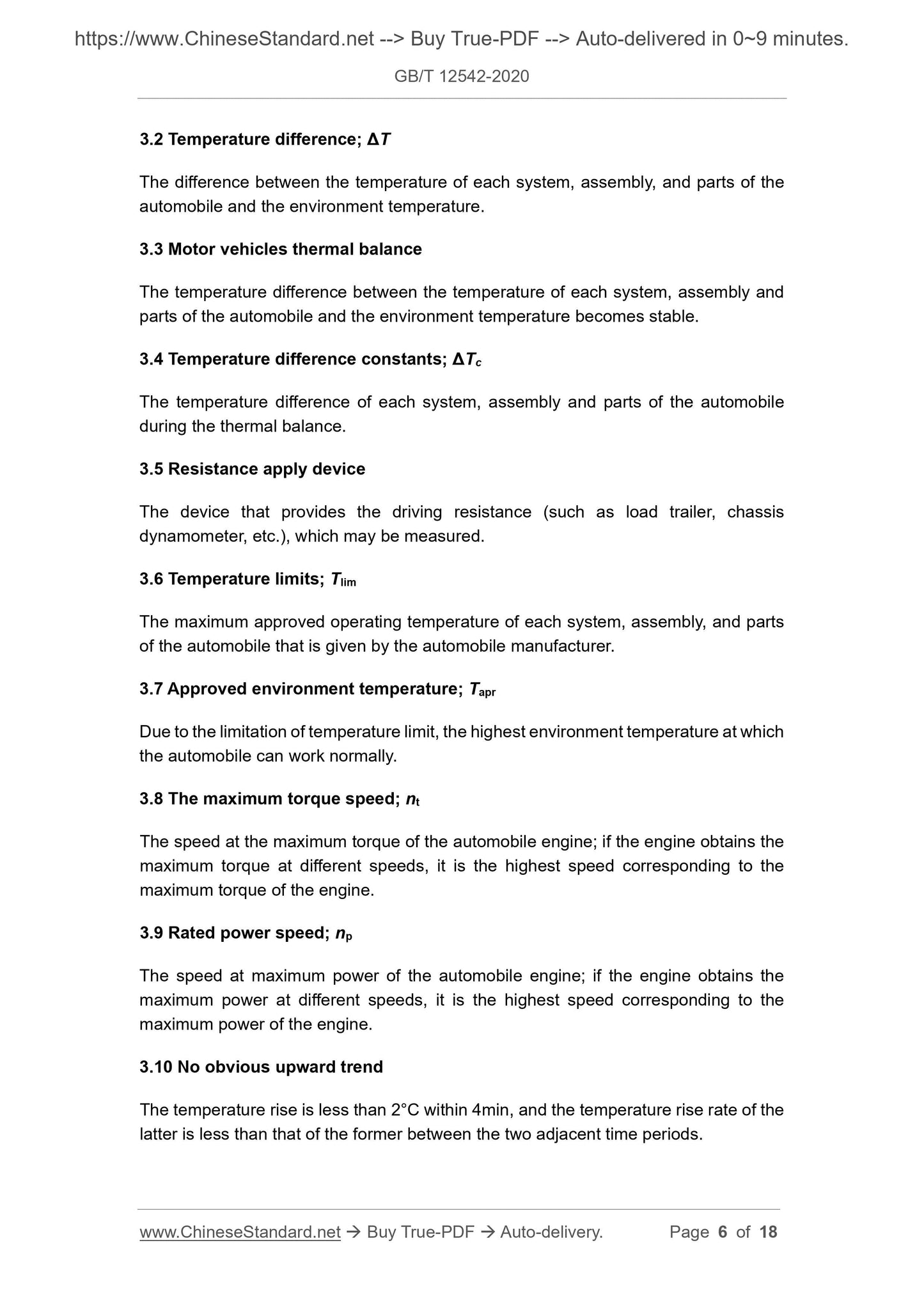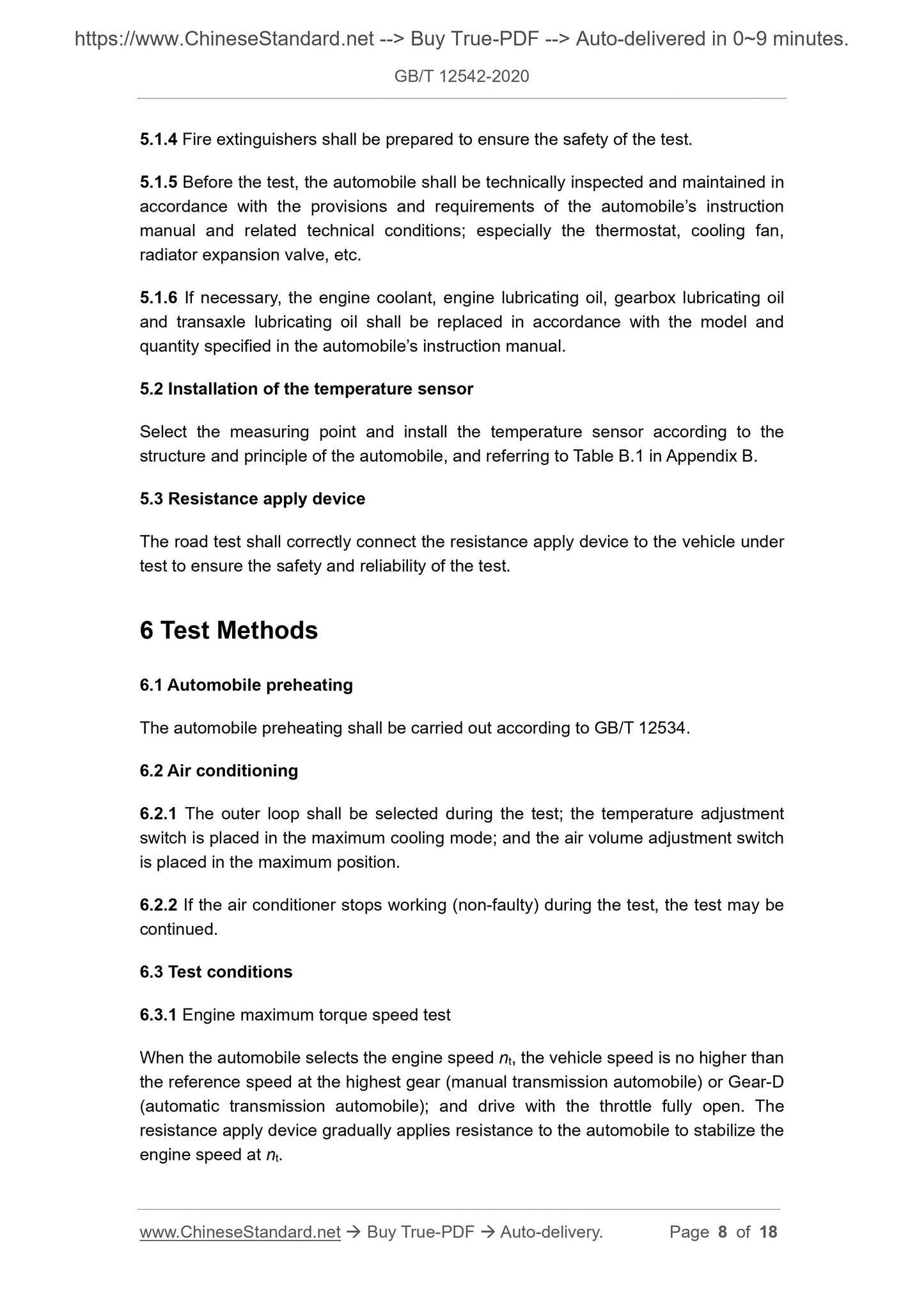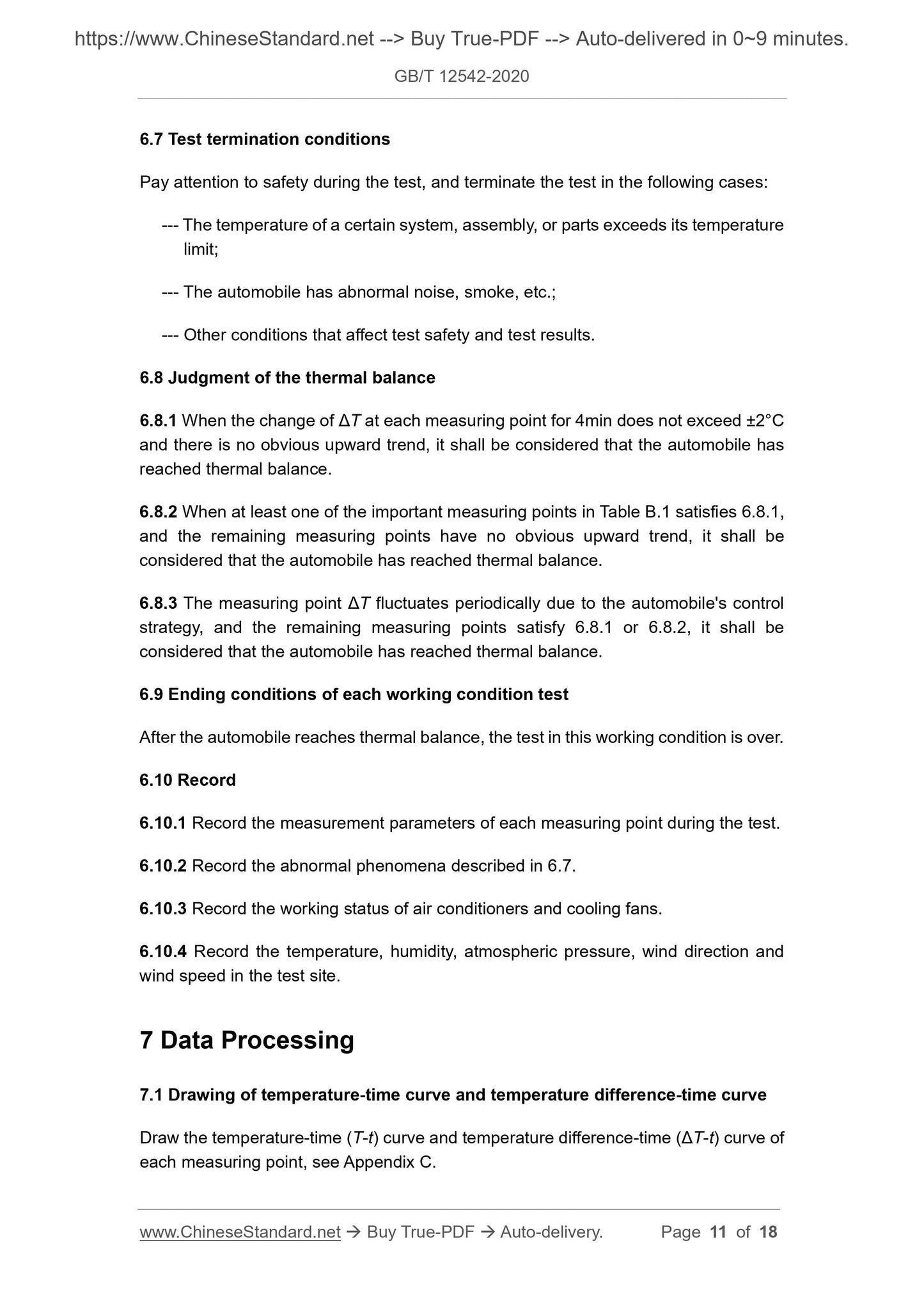1
/
of
7
www.ChineseStandard.us -- Field Test Asia Pte. Ltd.
GB/T 12542-2020 English PDF (GB/T12542-2020)
GB/T 12542-2020 English PDF (GB/T12542-2020)
Regular price
$205.00
Regular price
Sale price
$205.00
Unit price
/
per
Shipping calculated at checkout.
Couldn't load pickup availability
GB/T 12542-2020: Thermal Balance Capacity on-Road Test Method for Motor Vehicles
Delivery: 9 seconds. Download (and Email) true-PDF + Invoice.Get Quotation: Click GB/T 12542-2020 (Self-service in 1-minute)
Newer / historical versions: GB/T 12542-2020
Preview True-PDF
Scope
This Standard specifies the test conditions, test preparation, test methods, dataprocessing and test reports for the thermal balance capacity on-road test method of
for motor vehicles.
This Standard is applicable to the thermal balance capacity on-road test of Type-M and
Type-N vehicles with forced circulation liquid-cooled engines, which can be
implemented by reference when testing indoors; other Type-M and Type-N vehicles
can also be implemented by reference.
Basic Data
| Standard ID | GB/T 12542-2020 (GB/T12542-2020) |
| Description (Translated English) | Thermal Balance Capacity on-Road Test Method for Motor Vehicles |
| Sector / Industry | National Standard (Recommended) |
| Classification of Chinese Standard | T04 |
| Classification of International Standard | 43.020 |
| Word Count Estimation | 14,126 |
| Date of Issue | 2020-09-29 |
| Date of Implementation | 2021-04-01 |
| Older Standard (superseded by this standard) | GB/T 12542-2009 |
| Regulation (derived from) | National Standard Announcement No. 20 of 2020 |
| Issuing agency(ies) | State Administration for Market Regulation, China National Standardization Administration |
Share
